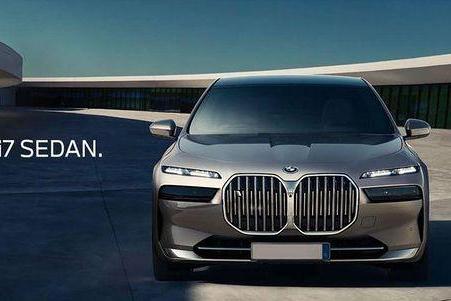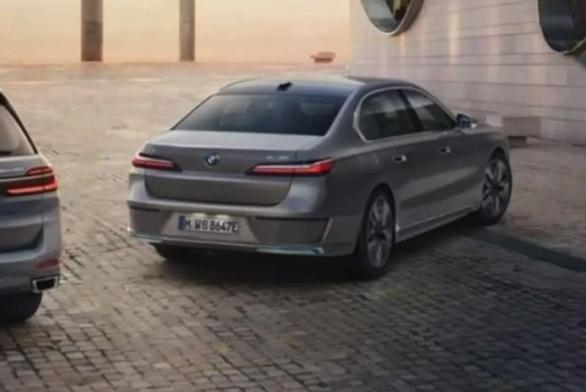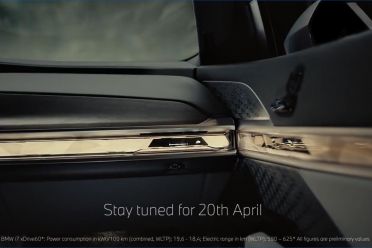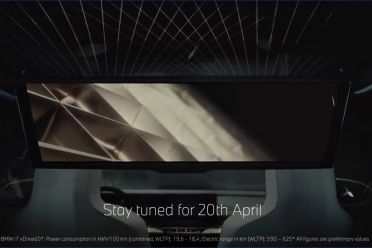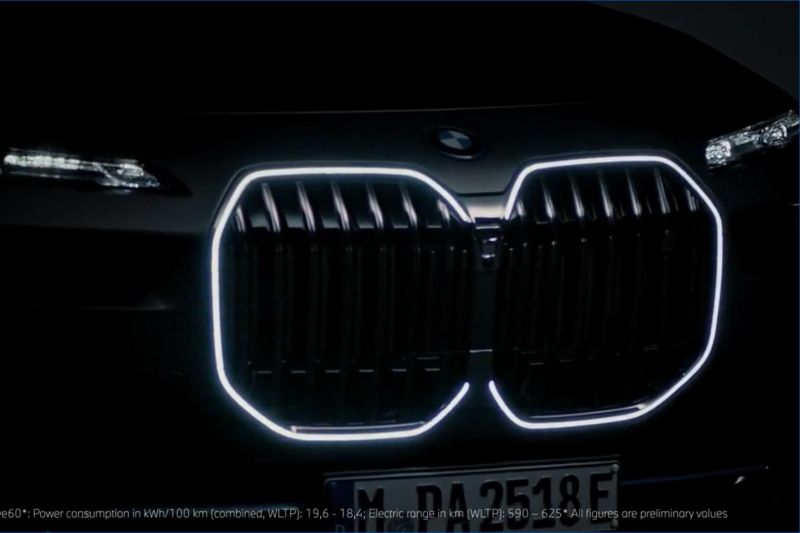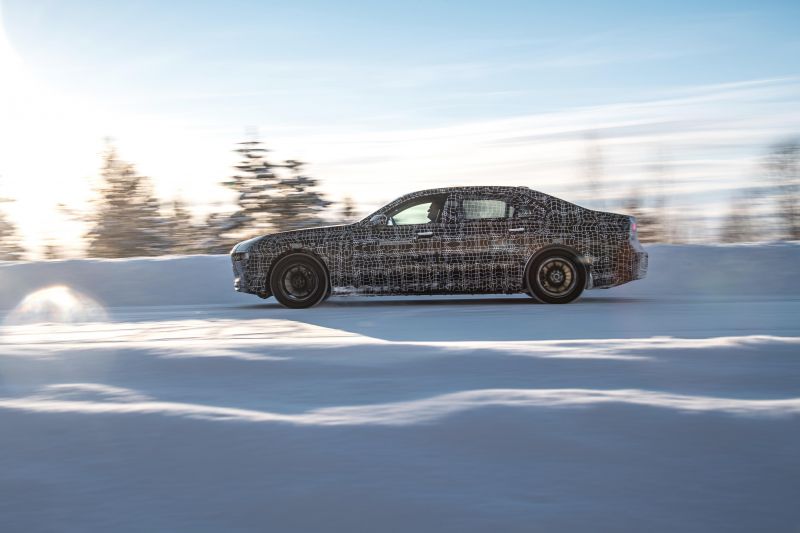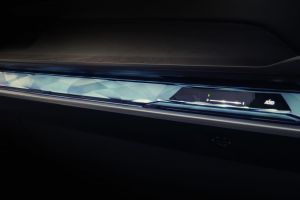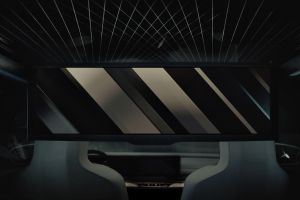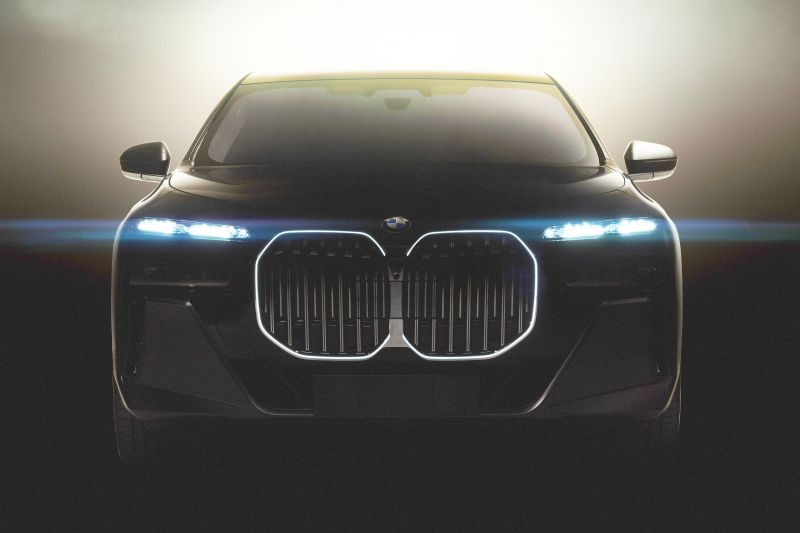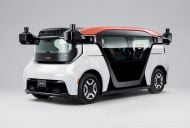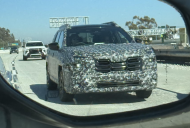BMW’s electric flagship sedan has been leaked ahead of its reveal this week.
The 2023 BMW i7, due to be revealed on April 20, bears a strong family resemblance to the recently revealed BMW X7 facelift with split-level lighting up front.
A banner image revealing the i7’s front end was mistakenly published on BMW’s website and shared by Instagram user Wilco Blok.
In addition to the polarising lighting arrangement, which includes ‘crystal glass’ for the top tier, the i7’s face features a prominent double-kidney waterfall grille like the current 7 Series with vertical chrome bars.
We also know this grille will be available with an illuminated perimeter.
A further image has also been leaked of the i7’s rear. It shows a boot lid with a flat surface and a prominent crease running between slim tail lights. There’s no full-width light bar.
Naturally, there are no exhaust outlets, leaving a fairly unadorned rear bumper.
A teaser published on BMW’s Twitter gives us a closer look at the i7’s grille, while also showing us more of the unusual crystal ornamentation decorating the cabin. The video shows it transitioning from having what appears to be a gold tint to being illuminated in a crisp white.
There’s also a shot of the enormous 31-inch BMW Theatre Screen rear display, which also reveals the unusual striations of the i7’s headliner from which the screen descends.
It has an 8K resolution and an ultra-wide aspect ratio of 32:9.
A disclaimer at the bottom reveals preliminary electric range figures of 590km-625km on the WLTP cycle for the xDrive60.
This model was previously confirmed by BMW USA to have 521km of range on the even stricter US EPA cycle.
It’s unclear whether this will be the top-spec i7, though ‘60’ tends to indicate something powerful in BMW land. The electric iX SUV, for reference, tops out with an M60 variant, while the outgoing 7 Series flagship is the V12-powered M760Li.
All models of the i7 all-electric sedan will be available with a dual-motor all-wheel drive system.
BMW has yet to confirm powertrain outputs for the i7. The iX M60 has 455kW of power and 1100Nm of torque in its most powerful drive mode, while even the xDrive50 one rung down has 385kW and 765Nm.
For reference, the twin-turbo V12 in the outgoing M760Li flagship puts out 448kW and 850Nm.
Inside the i7 are many high-tech items, including a curved display similar to the iX all-electric SUV that houses a 12.3-inch digital instrument cluster and 14.9-inch infotainment touchscreen.
While the Mercedes-Benz EQS has a completely unique body and architecture from the similarly-sized S-Class, the all-electric i7 is much more closely related to the redesigned combustion-powered 7 Series.
Like the i4 and the 4 Series Gran Coupe, the i7 and 7 Series will share the same body, but with unique design elements primarily at the front and back.
In late 2021 BMW released a suite of official “spy photos” of the i7, which show a sedan with a traditional three-box silhouette undergoing winter testing in Sweden.
BMW has also confirmed its next-generation 7 Series will have an available SAE Level 3 autonomous driving feature.
“Level 3 you will see from us in 7 Series next year,” said BMW director of development Frank Weber in an interview with Forbes Wheels in November 2021.
“It’s a function you can buy. It will be ready to go at the launch of the 7 Series.”
According to Weber, this SAE Level 3 autonomous driving system is being developed with Intel’s self-driving subsidiary, Mobileye.
It’s also set to eventually become available on future BMW 5 Series, X5 and X7 models, as well as the all-electric iX as an optional upgrade from its current SAE Level 2 system.
MORE: Everything BMW 7 Series

